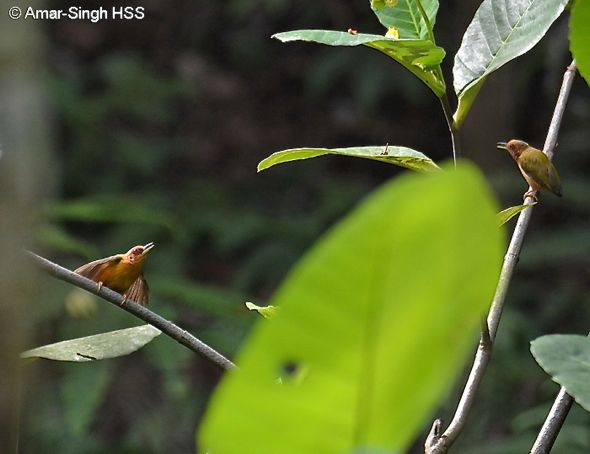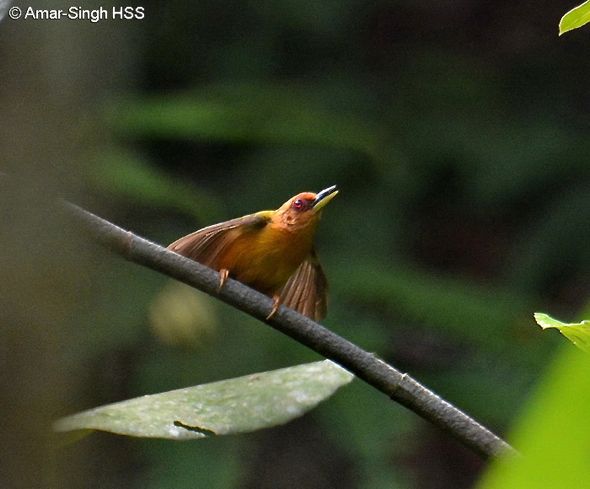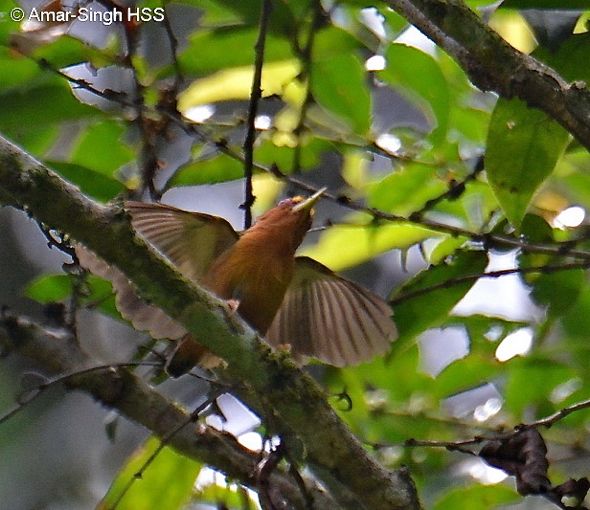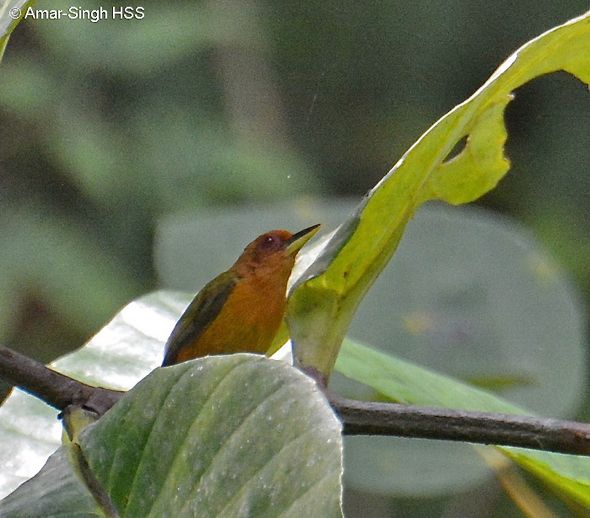“The Rufous Piculets (Sasia abnormis abnormis) are difficult birds to observe due to their preference for the dense undergrowth of the lowland forest, small size and rapid speed. Hence their social behaviour is poorly documented. Short says it best: “Although Rufous Piculets are not uncommon… these birds are exceptionally fast-moving, difficult to detect, and exceedingly difficult to observe for more than a few seconds. Most glimpses of them occur when one or several pause momentarily before darting into the forest … The dense understory they prefer usually precludes a chase after them.” Short, Lester L. 1973. Habits of some Asian woodpeckers (Aves, Picidae). Bulletin of the AMNH ; v. 152, article 5 (available for download HERE).
“I had an opportunity to watch an adult pair’s courtship behaviour for up to 4 minutes. I was in dense primary jungle, on a slope where there was a small stream in the gully. This ravine/gully allowed for some light to come into that part of the forest. I met the pair (above) as the male (on the left) was displaying. He would open and close his wings rapidly while the female watched.
“This display (above, below) was done numerous times both from the front and also with the male turning around. The displays were intermittently interrupted by the female flying towards the male and landing alongside. I am also fairly certain (not 100%) that the female also engaged in these displays i.e. also did wing displays. The pair would also fly rapidly, chasing one another from tree to tree, very much like that I have observed in some sunbirds. Sharp, rapid ‘tic’ calls were also made by the pair in flight and during display. Unfortunately after a few minutes of courtship they entered the dense jungle, across the ravine, and I could not follow.
“Sex differentiation: The primary differentiating feature of both sexes is the golden or yellow forehead in male, rufous/chestnut in females. This feature is not easy to see from a distance and in rapidly moving birds. I am certain of sexing here as I have many serial images of the birds in motion (see above, of the displaying male).
“Due to the rapidity of movements, dark environment and distance I was not always sure of male-female differentiation between the pair (who was doing what). But I am fairly certain I caught the female doing a wing display at least once.
“The above image shows a wing display by a female. Below is the same bird from in front, and it had flown to the male’s location before doing this action.”
Dato’ Dr Amar-Singh HSS
Ipoh, Perak, Malaysia
13th July 2014
Location: Ulu Kinta Forest Reserve, Ipoh, Perak, Malaysia
Habitat: A trail through primary jungle of the forest reserve













